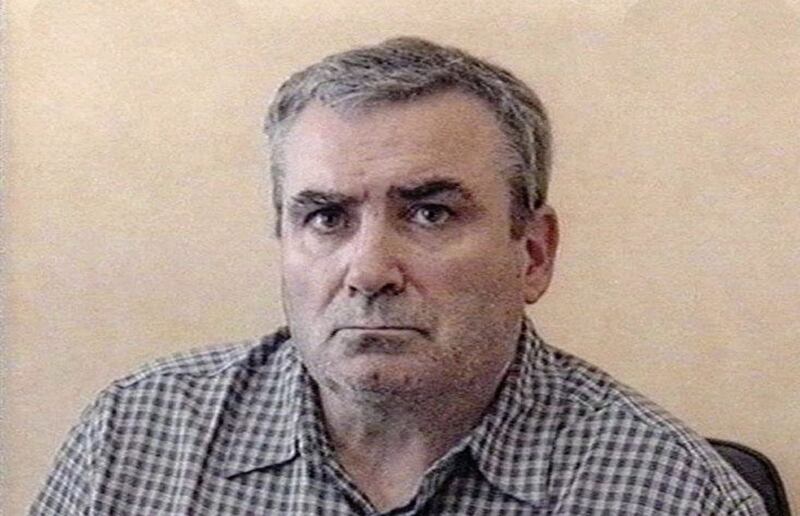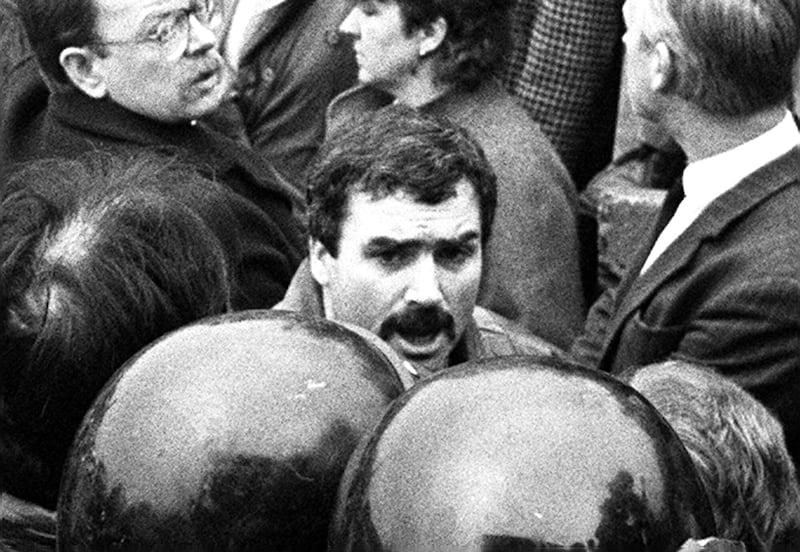The security forces were aware that a Co Tyrone man accused of being an informer was likely to be shot dead by the IRA but did not intervene to save him, it has emerged.
Fresh details about the circumstances around the death of Seamus Morgan came to light this week after the Public Prosecution Service (PPS) confirmed no charges will be brought against two former British soldiers linked to the case.
Mr Morgan, from Dungannon, Co Tyrone, was shot dead by the IRA in March 1982.
A father-of-four, his body was found dumped near the south Armagh village of Forkhill on March 5 that year.
A police witness later told an inquest the dead man was not an informer for either the police or British army.
It is understood Mr Morgan’s family do not believe he was working for the state when he was killed.
The Co Tyrone man’s case was referred to the PPS by Operation Kenova, which was set up in 2016 to investigate the activities of the British army agent known as Stakeknife.

In 2003 Belfast republican Freddie Scappaticci was named as Stakeknife.
The agent, who has been linked to multiple murders, denied the claim.
Scappaticci, who is reported to have died last year, was a former commander of the IRA’s Internal Security Unit (ISU), also known as the ‘Nutting Squad’, which was responsible for hunting down suspected informers and agents.
It is believed some of those interrogated by the unit were tortured in a bid to extract confessions.
Operation Kenova is due to report on its investigation into Stakeknife next month.
Earlier this week the PPS said it had taken decisions not to prosecute four individuals reported by Operation Kenova in relation to its investigation.
They are two former soldiers who worked as agent handlers within the British army Force Research Unit (FRU) in the 1980s and two individuals alleged to have been members of the IRA.
The four were reported to the PPS for consideration across six files submitted by investigators.
Evidence on these files related to 10 different incidents, which happened in the early 1980s, including four murders.
Earlier this week relatives of the dead received correspondence from the PPS providing details of how the no-prosecution decisions were reached.
A document provided to Mr Morgan’s family confirms that the two former FRU members, known as Suspect 1 and Suspect 2, were responsible for ‘handling’ an informer, known as ‘The Source’, within the IRA’s Internal Security Unit (ISU) when Mr Morgan was killed.
While ‘The Source’ was not identified, it is understood to be a reference to Stakeknife.
Sources say that before he was shot Mr Morgan was transported to Co Monaghan after being released from custody at Dungannon RUC station, where he had been held while under arrest.
The PPS document confirms Operation Kenova investigators, using intelligence records, were able to establish that Mr Morgan was interrogated by the IRA between February 26 and March 1, 1982.
The paper indicates that Stakeknife told his handlers that Mr Morgan has been moved to another address for “court martial”, which took place the following evening.

It is confirmed that Stakeknife returned with others to Belfast on March 3 and reported his involvement along with what he knew to his handlers.
Records show this information was then provided to the FRU’s Operations Officer, who then briefed RUC Special Branch the next day.
However, there does not appear to have been an effort to intervene and save Mr Morgan’s life.
No records were found relating to any contact with An Garda Síochána “in relation to a potential rescue attempt” while Mr Morgan was being held south of the border.
The documents also suggest that the RUC believed, “on the basis of information available to them”, that the IRAs Army Council would “reprieve” Mr Morgan, who would be allowed to return to the north.
If he had returned to the north the RUC were considering an operation that would have involved his arrest, “seemingly for his own protection”.
It has also emerged the day before Mr Morgan was interrogated, February 26, Stakeknife told his FRU handlers that masks and a gun were being brought to a safe house, where he would be with others to carry out an investigation.
Records show that if Morgan had attempted to escape, he would have been shot while Stakeknife was present.
The PPS has document also show that Suspect 1 told the informer he should avoid such a situation.
When Stakeknife repeated his concerns, including that the matter would be outside his control, Source 1 remarked “just don’t tell us”.
When being questioned by Operation Kenova, Suspect 1 answered all questions put to him while Suspect 2, who was appointed as a handler two months before Mr Morgan’s murder, did not answer.
During interview Suspect 1 claimed that the purpose of running Stakeknife was to save people who had been abducted by the IRA’s ISU.
He said he had no operational role, and all information would have been passed to the senior FRU officers and RUC Special Branch.
He added that decisions over “executive action” were taken by the RUC but “rescues were not always possible because PIRA moved their abductees around and it was not always possible for police action to be taken in the Republic of Ireland”.
He added that both the RUC and MI5 were aware that FRU had a mole inside the ISU and what he was reporting on.
When asked about his comment “just don’t tell us” Suspect 1 said it was a “throwaway comment” that represented ‘black humour’ between the informer and his handlers.
He denied any suggestion that Stakenife’s involvement in such an incident was being condoned.
Solicitor Gavin Booth, of Phoenix Law said: “The family of Seamus Morgan are wish to take some time to consider the detailed PPS explanation, which includes some very shocking details, and will then consider all options open to them in terms of next steps.”








